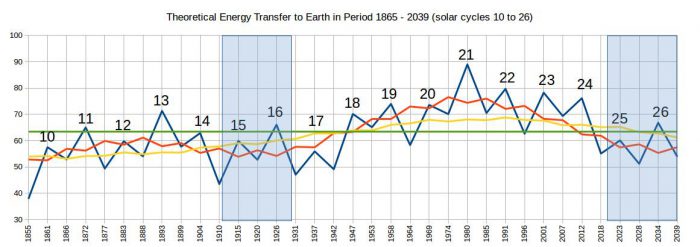To assume such an influence was another aberration of traditional science. The Sun and the Earth do not form a closed system. Only in such a closed system could one assume such an influence.
Similarly, winter in Europe does not influence summer in Australia because the Earth alone is not a self-contained system. If this were the case, one could actually assume that a shift of energy from Europe to Australia could result in a worsening of winter in Europe and an increase in summer temperatures in Australia. However, the Earth does not exist only for itself in space. The cosmic environment of the Earth influences the amount of energy in the Earth's atmosphere quite considerably. If the supply of this energy to the Earth decreases, the winter in Europe may become colder than usual, and at the same time the summer in Australia may become colder.
The Sun and Earth are both members of the vast Cosmic Hierarchy of the Solar System. They both experience the transfer of energy between different, practically innumerable, other members of the Hierarchy. The energy transfer changes cyclically with the cycles of this same Cosmic Hierarchy. One reaction of the Sun to the fluctuations in the amount of energy of this transfer are the sunspots on the surface of the Sun, which also increase or decrease cyclically. The same fluctuations of the cosmic energy transfer also affect the supply of energy to the Earth. These fluctuations are fundamentally responsible for the changes in the global climate on Earth. And they do so simultaneously with the cycles of sunspots on the surface of the Sun. However, the Earth's climate and the sunspots are completely independent of each other. Their temporal correlation is only a spurious effect.
The first diagram below shows our theoretical calculations (achievable with the methods of Unified Physics) of the fluctuations in the amount of energy Earth has received, or will receive, between the years 1856 and 2039. We see that the next two decades will bring about the same energy transfer to Earth as the second and third decades of the 20th century.

The second diagram shows the internationally observed fluctuations in the number of sunspots on the surface of the Sun visible from Earth since the beginning of scientific observation.

The numbers of the cycles are the same on the two diagrams because they number the cycles of the fluctuations of cosmic energy reaching the Solar System, and not just the cycles of sunspots, as traditional science has claimed.
How many sunspots will appear on the surface of the Sun in the coming decades is, of course, not something we can predict with our model of climatic fluctuations on Earth. It is getting much colder on Earth. At the same time, however, the Sun may be hit by an unusually large number of "gusts" of energy transfer, which will ultimately cause a correspondingly large number of sunspots. Or not. Earthly climate and sunspots are independent of each other.